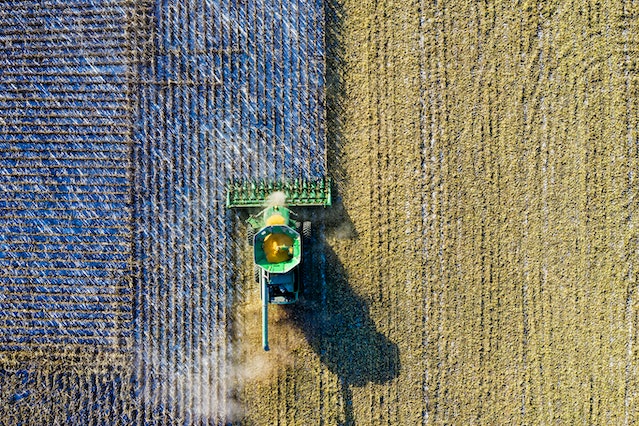Oct09

As the global population increases, pressure intensifies on the agricultural industry. At present, the world population stands at over 8 billion people and continues to grow. It is projected to reach 9 billion by 2037. With this increasing population comes a need to effectively feed the planet and ensure that hunger and starvation do not become an increasingly prevalent feature of the modern world, especially in developing countries.
The agricultural sector must strive to produce more food per area of land and adopt the latest technologies that enable the most efficient farming methods to be achieved. In addition, increasing consideration must be given to the wider environmental aspects of farming, with efforts made to minimize pollution and the use of fertilizers that may contaminate the surrounding areas. In this article, three key examples of how modern agriculture is striving to adapt its practices will be explored in detail.
It is estimated that around one billion tonnes of animal feed is produced globally each year. This is vital for rearing healthy livestock that can feed an increasing world population. However, it is also of paramount importance that this feed remains free of contamination so that potentially harmful products do not enter the food chain and are consumed by humans. Farms across the world rely on fleets of tankers and trucks to deliver this feed, and it is vital that contamination does not occur during transit or when the product is released from the vehicle.
Thankfully, the modern range of Animal feed blowers seeks to minimize any contamination risks when the product is being discharged in bulk from supply vehicles. Air is used to discharge the feed from the vehicle when using modern blowers. The process is completely oil-free and uses contactless operations. This ensures that no contaminants can enter the feed at this stage of the transportation process, helping to keep animals healthy and the food chain safe.
Large farms that operate on a commercial scale traditionally required immense amounts of time to be spent monitoring crops and assessing yields. This labor-intensive process was both costly and inefficient. Today, there is an increasing use of drones in the agricultural sector for this purpose. Drones can monitor vast areas of farmland far more quickly than can be achieved by a human labor force, and by using drone-mounted cameras, a comprehensive picture of crops can be gained. In addition, the use of IoT in crop monitoring allows soil conditions to be assessed in real-time and accurate weather impacts to be monitored. This technology ensures that crop yields are as high as possible and that the productivity of farmland achieves optimum levels.
Briefly, the last five years in agriculture have seen an increase in the use of autonomous farming equipment such as tractors and harvesters. This technology has several benefits. Most notably, it can help with labor shortages in the farming industry and may lead to less negative impacts on the environment. Today, seed planting robots are predicted to become more prominent in large-scale agricultural operations as they can reduce labor costs, increase yields, and seed a large area far more quickly than could be achieved by a human workforce.
Keywords: Business Strategy
 Concrete’s Carbon Problem and the Race to Fix It
Concrete’s Carbon Problem and the Race to Fix It Employer Branding Needs Growth Hacking — Not More Campaigns
Employer Branding Needs Growth Hacking — Not More Campaigns The Wireless Renaissance: From Tesla’s Dream to Agentic Autonomy
The Wireless Renaissance: From Tesla’s Dream to Agentic Autonomy Collective Resonance: How Consciousness Scales Beyond the Individual
Collective Resonance: How Consciousness Scales Beyond the Individual Autonomous Wingmen: Scaling Sustainable Aviation via NVIDIA NAT and Formation Flight
Autonomous Wingmen: Scaling Sustainable Aviation via NVIDIA NAT and Formation Flight